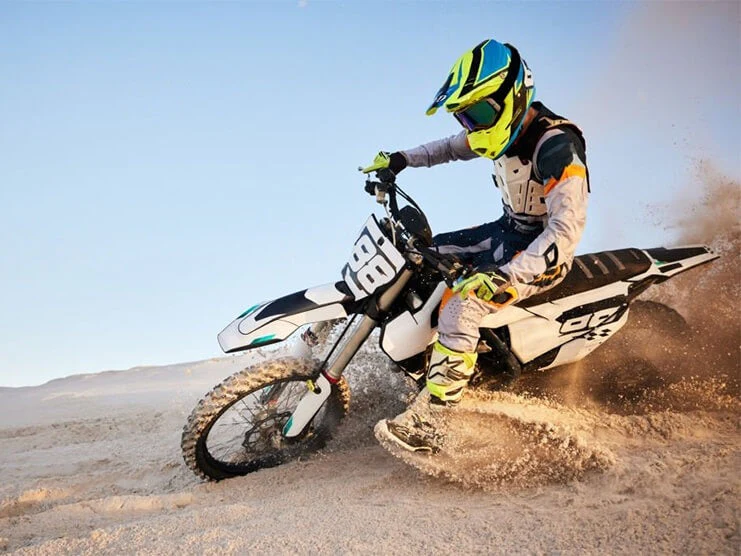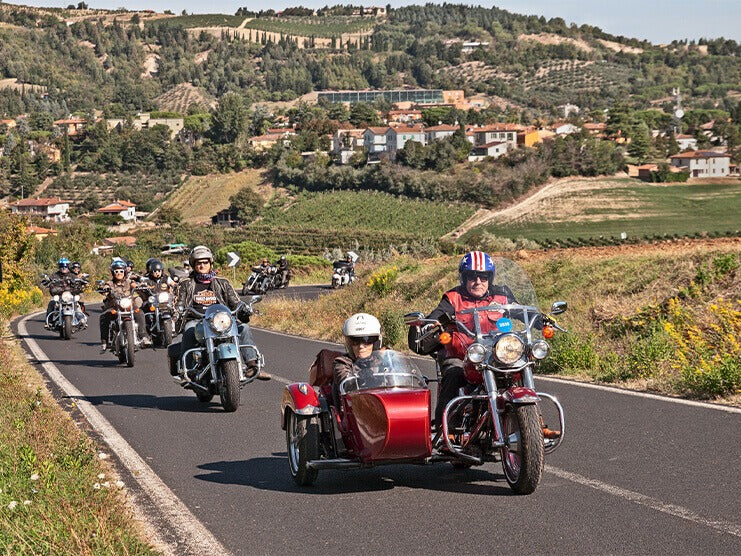Table of Content
Off-road motorcycle riding is fun but requires expertise and training. There are specific places where you can go on off-road adventures, including forests, sands, hills, and uneven terrain. If you are a beginner, there are limits to where you can go off-roading. There are certain off-road surfaces and conditions that are too difficult for new riders to overcome.
If you are a passionate learner and spend a lot of time riding on unpaved terrain, you will eventually become a pro off-road motorcycle rider. Off-roading is very different from riding a sports bike or a cruiser on paved terrain. This article presents the 12 best off-road motorcycle riding tips for beginners.
1. Selecting the Right Motorcycle’s Type
The first thing to do is select which type of motorcycle best suits you for off-roading. If you are looking for a motorcycle that is designed for both on- and off-roading, then dual sport and adventure bikes are good options.
Adventure bikes have better on-road than off-road capabilities, whereas dual sport bikes are modified versions of enduro motorcycles with parts that make them street-legal on paved roads. If you are looking for a motorbike that is designed only for off-roading, then enduro/dirt bikes are the best options.
1.1 Adventure Bike

1.2 Dual Sport Bike

1.3 Dirt Bike

1.4 Difference Between Enduro, Dirt Bikes, Adventure, and Dual Sport Bikes
| Motorcycle Type | Enduro Bikes | Dirt Bikes | Adventure Bikes | Dual Sport Bikes |
|---|---|---|---|---|
| Capability | Off-road | Off-road | On- and off-road | On- and off-road |
| Better Performance | Longer off-road rides | Shorter off-road rides | Performs better on paved terrain | Performs better on unpaved terrain |
| Comfortability | More comfortable on unpaved terrain | Less comfortable on unpaved terrain | More comfortable on paved terrain | Less comfortable on paved terrain |
| Weight | Heavier than dirt bike | Lighter than enduro | Heavier than dual sport | Lighter than adventure bikes |
2. Choose a Lightweight Motorcycle
It also depends on how much weight a beginner can handle while maneuvering on challenging terrain and climbing inclines. Dirt bikes are the lightest motorcycle in the off-road motorcycle category. Adventure bikes do not handle as well when off-roading. They are heavyweight motorcycles that are difficult to repair, maintain, and pick back up if it falls over.
Dirt bikes are easier to handle because of their low weight compared to adventure motorcycles. You should choose the dual sport over a dirt bike if you want a primarily off-road motorcycle.
2.1 Weight and Size Comparison

3. Do Not Go Off-Roading Alone

Going off-roading alone is dangerous, especially if you are a beginner. For example, if you are riding an adventure motorcycle and it falls, you may need a hand to pick yourself up and the motorbike. If you plan to go on a solo off-road trip, make sure you carry all the essentials including a first-aid box, mobile phone, water, etc. Also, make sure you are traveling with a fellow rider or a passenger.
4. Practice Braking Earlier
Beginners often use their brakes too late when they encounter an obstacle, whether it is a log, rocks, etc. Beginner off-road riders should anticipate the obstacles and challenging conditions ahead of time, slow down earlier rather than at the last minute, and apply the brakes beforehand.
5. Riding Position

Always try to sit in a flexible position where you can easily shift your weight and stand up on the footrests. Keep your knees and elbows slightly bent while off-roading.
5.1 Riding on the Balls of the Feet
Make sure to ride an off-road motorcycle on the balls of your feet. Riding in this position gives you more flexibility and puts less pressure on the body while off-roading. This is because landing on your heels causes more damage to the body compared to landing on your toes.
5.2 Knees Placement
Squeeze the sides of your motorcycle with your knees to keep the vehicle balanced and in control.
6. Look Ahead
A beginner should stay alert and look ahead at all times because even a minor distraction can cause you to lose control. You should be aware of the kind of terrain you are riding on, ride slowly at a reasonable speed, and keep looking ahead so that you can anticipate obstacles in time.
7. Beginners Should Know When to Stand
Many beginner riders have no idea when to ride in the standing position. While riding downhill, no matter how long the road is, beginners should stand on their motorcycles’ footrests. There are several advantages of riding in this position while going downhill. First, you create more balance while in a standing position and reduce the likelihood that your motorcycle will lose control. Sitting while riding downhill will cause your weight to shift forward towards the front of your motorcycle. Secondly, standing up while riding downhill will ensure that you have better control over your brakes.
8. What to Do When a Tire is Stuck

It is useless to keep twisting the throttle if your tire is stuck as it is only spinning in place, making it more difficult to get the tire out. A beginner would benefit from fitting their motorcycle with tires with more traction. The rider should also move back and forth on the seat and then twist the throttle to get more traction.
9. Avoid Touching the Ground with your Foot While Off-Roading
Touching the ground with your foot while off-roading is mostly done to help keep balance while traveling over tough terrain and obstacles. Putting your foot on the ground frequently when it is not required can cause you to lose your balance as you are no longer in a good riding position. Your leg connecting with the ground at high speed could also result in your lower torso being damaged or severely injured.
10. Be Sure About Where You Want to Ride
A beginner rider should plan out the route, rest stops, and destination fully, as well as an alternate route to avoid obstacles.
11. Wear the Right Off-Road Motorcycle Riding Gear

When off-roading, it is important to wear the right motorcycle gear
A helmet that is the wrong size can cause you to lose focus. Also, the suit should be flexible enough to stretch in both sitting and standing positions. Wearing boots that have a good grip is almost as important as wearing a helmet.
12. Take Regular Breaks
While you are off-roading, almost every muscle in your body is being actively worked. If you do not want to become fatigued quickly, it is important that you take frequent breaks in intervals.
13. Takeaway
Off-road motorcycle riding sounds fun but you need the required skills and training first. Start with selecting a lightweight off-road motorcycle that is easy to handle and make sure to practice. A beginner can easily become an expert off-road rider if he/she follows these 12 off-road motorcycle riding tips.
To make off-road motorcycle rides more enjoyable, beginners can increase the storage capacity of their dirt bikes by attaching LUGGAGE BAGS, SADDLEBAGS, BACKPACKS, TAIL BAGS, and TANK BAGS available at Viking Bags. There are different LUGGAGE options available for adventure bikes as well.













Leave a comment
All comments are moderated before being published.
This site is protected by hCaptcha and the hCaptcha Privacy Policy and Terms of Service apply.